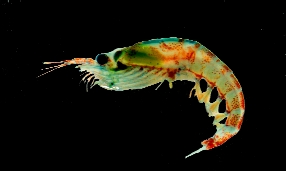 |
The CCAMLR krill synoptic survey |
 |
The CCAMLR krill synoptic survey |
| Country | Net | Mesh Size (mm) | Mouth Area (m2) |
| Japan | KYMT | 3.4 | 9.0 |
| UK | RMT8 | 4.0 | 8.0 |
| USA | IKMT | 0.5 | 2.5 |
| Russia | IKMT | 6.0 | 6.0 |
| Korea | IKMT | 0.5 | 4.5 |
| Introduction | Itinerary | Station positions | Cruise tracks | Planning Meeting | Sampling Protocols | Participants | Background papers | Contents |
Page updated 8 December 1998